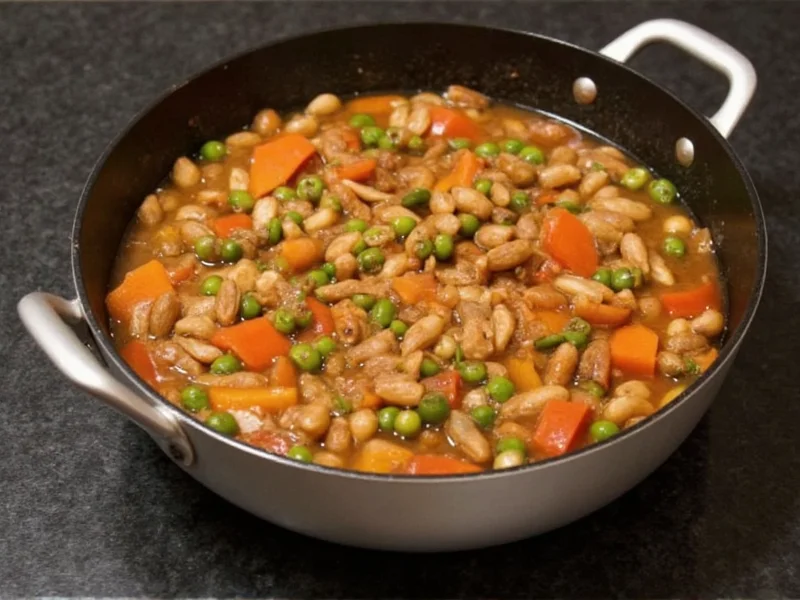Understanding when to add gumbo file powder is essential for creating an authentic Louisiana dish with the proper consistency and flavor profile. This traditional thickening agent, made from ground sassafras leaves, has unique properties that require specific handling to achieve optimal results in your cooking.
What Is Gumbo File Powder?
Gumbo file (pronounced fee-lay) is a spice mixture created by drying and grinding the leaves of the sassafras tree. Native American tribes originally developed this technique, which later became integral to Creole and Cajun cuisine. Unlike roux or okra, file serves both as a thickener and flavor enhancer, contributing earthy, slightly spicy notes to the finished dish.
Why Timing Matters for File Addition
The critical factor in when to add gumbo file relates to its mucilaginous properties. File contains natural gums that react differently to heat than other thickeners:
| Thickening Agent | Heat Tolerance | Optimal Addition Point |
|---|---|---|
| Roux | High | Beginning of cooking process |
| Okra | Moderate | Midway through cooking |
| File powder | Low | After removing from heat |
When file powder is exposed to boiling liquid, the prolonged heat causes the natural gums to over-thicken and develop an unpleasant, stringy texture. This scientific reaction explains why traditional cooks strictly follow the practice of adding file powder after cooking gumbo.
Step-by-Step Guide to Proper File Usage
Follow these steps for perfect file integration in your gumbo:
- Complete your gumbo recipe according to standard preparation methods
- Turn off the heat source and remove the pot from the burner
- Allow the gumbo to rest for 2-3 minutes (this critical cooling period prevents stringiness)
- Sprinkle file powder gradually while stirring gently (start with 1 teaspoon per quart)
- Let the gumbo sit for 5 minutes to allow thickening to develop
- Taste and adjust seasoning if necessary before serving
Common Mistakes to Avoid
Many home cooks make these errors when using file powder in gumbo:
- Adding file while boiling - Creates stringy, unpleasant texture
- Using too much file - Over-thickens and creates medicinal flavor
- Mixing file directly into hot stock - Causes clumping and uneven distribution
- Substituting file for roux from the beginning - Loses traditional flavor development
Remember that file powder continues to thicken as it sits. Your gumbo will be slightly thinner immediately after adding file than it will be when served.
Traditional File Powder Application Techniques
In authentic Louisiana cooking, file powder often appears tableside rather than being incorporated during preparation. This traditional gumbo file serving method allows each diner to customize their bowl:
- Place a small shaker of file powder on the table
- Let guests add file to their individual servings
- Stir gently after addition to incorporate
This approach respects regional traditions while accommodating personal preferences for thickness and flavor intensity. Many Creole families consider this the most authentic when to add file to gumbo technique.
Alternative Thickening Methods
If you've accidentally added file too early or want to experiment with different textures, consider these alternatives:
- Roux-based thickening - Traditional foundation for most gumbos
- Okra addition - Add during the last 30 minutes of cooking
- Reduced stock - Simmer uncovered to naturally thicken
- Cornstarch slurry - For emergency thickening (not traditional)
Remember that file powder serves a dual purpose as both thickener and flavor component. Substitutes may thicken effectively but won't replicate the distinctive sassafras notes that define authentic file gumbo.
Storage and Quality Considerations
Proper storage affects how you should use file powder in gumbo recipes:
- Store in an airtight container away from light and moisture
- Use within 6-12 months for optimal flavor (older file loses potency)
- Check for musty odors before use (indicates spoilage)
- Fresh file should have a pleasant, earthy aroma
When measuring file powder, remember that older product may require slightly more quantity to achieve the same thickening effect as fresh file.
Can I add file powder while my gumbo is still cooking?
No, you should never add file powder while gumbo is actively boiling. The high heat causes file to develop a stringy, unpleasant texture. Always remove the pot from heat and let it cool for 2-3 minutes before adding file powder.
How much file powder should I use per serving of gumbo?
Start with 1/4 to 1/2 teaspoon of file powder per serving. The traditional approach is to let each person add file to their individual bowl, beginning with a small pinch and adjusting to taste. Remember that file continues to thicken as it sits.
What happens if I add too much file powder to my gumbo?
Excessive file powder creates an overly thick, almost gelatinous texture and can impart a medicinal flavor. If you've added too much, try thinning with additional hot broth and balancing flavors with a splash of vinegar or lemon juice. For future batches, remember that less is more with file powder.
Can I use file powder as the only thickener in gumbo?
While possible, traditional gumbo typically uses file as a finishing thickener rather than the primary one. Most authentic recipes begin with a roux, sometimes include okra, and then use file as a final adjustment. Using file as the sole thickener may result in less complex flavor development.
Does file powder affect the flavor of gumbo significantly?
Yes, file powder contributes distinctive earthy, slightly wintergreen-like notes that are characteristic of file gumbo. The flavor is subtle but recognizable to those familiar with traditional Louisiana cuisine. Fresh file provides the best flavor; older file loses its aromatic qualities while retaining thickening properties.











 浙公网安备
33010002000092号
浙公网安备
33010002000092号 浙B2-20120091-4
浙B2-20120091-4